How to Create a Gradient in Drawing
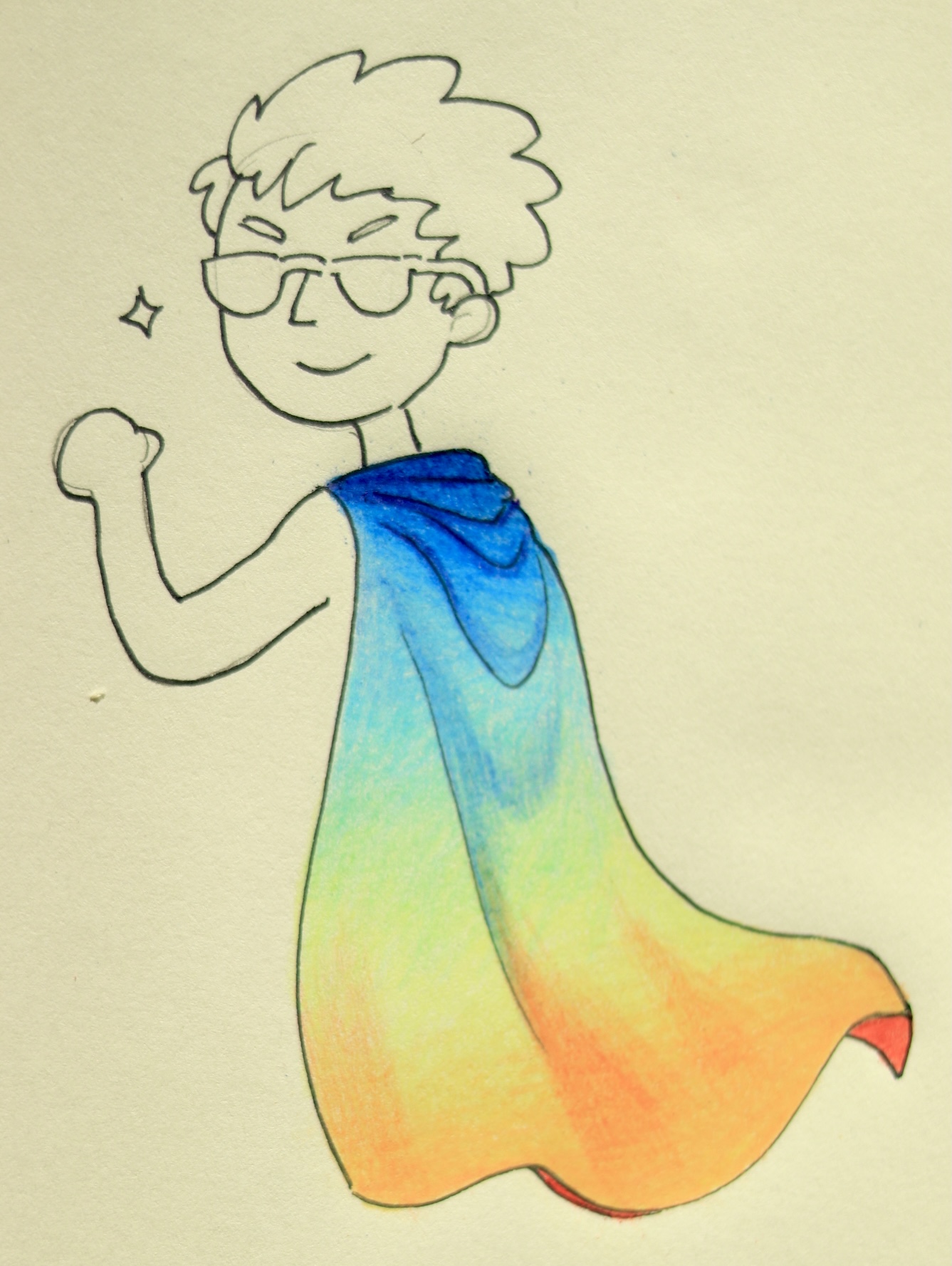
When you want to start coloring your drawings, learning how to create gradients can be very useful! Today, we will focus on gradients, and create them using an affordable and accessible coloring method: colored pencils!
CHOOSING THE RIGHT COLORED PENCILS FOR GRADIENTS
It's time to grab your pencil cases, empty your artist drawers, and get out all the colored pencils you can find!
There are colored pencils of all qualities, and several different types. You can mix brands and even use watercolor pencils with standard pencils (although we will use them here without watercoloring). Be warned that with some low-quality pencils (like some intended for children), you will have a hard time getting dense colors and nice gradients. There's no need to spend a fortune on artist-grade pencils, but if you're constantly frustrated by your pencils, that might be why.
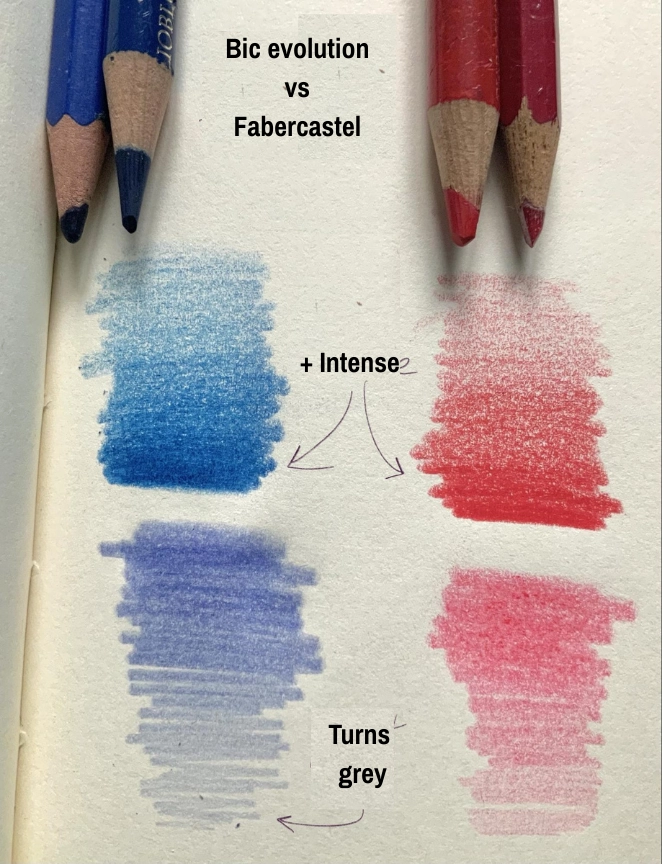
Okay, now that you have all your pencils in front of you, take all your red, blue, and yellow pencils. Why these colors? Because these are the primary colors and they are the most important. In theory, you can do everything with just these pencils. (In practice, it’s still better to also have the other colors as it simplifies the task and allows for nuances!)
And, depending on whether you have a simple small box of pencils or, like me, lots of pencils bought over dozens of years individually or in boxes, you will have more or less pencils in your hands.
Among these pencils, you will need to choose THE pencil that best represents each color. Feel free to try them out (The color on the screen is not always indicative).
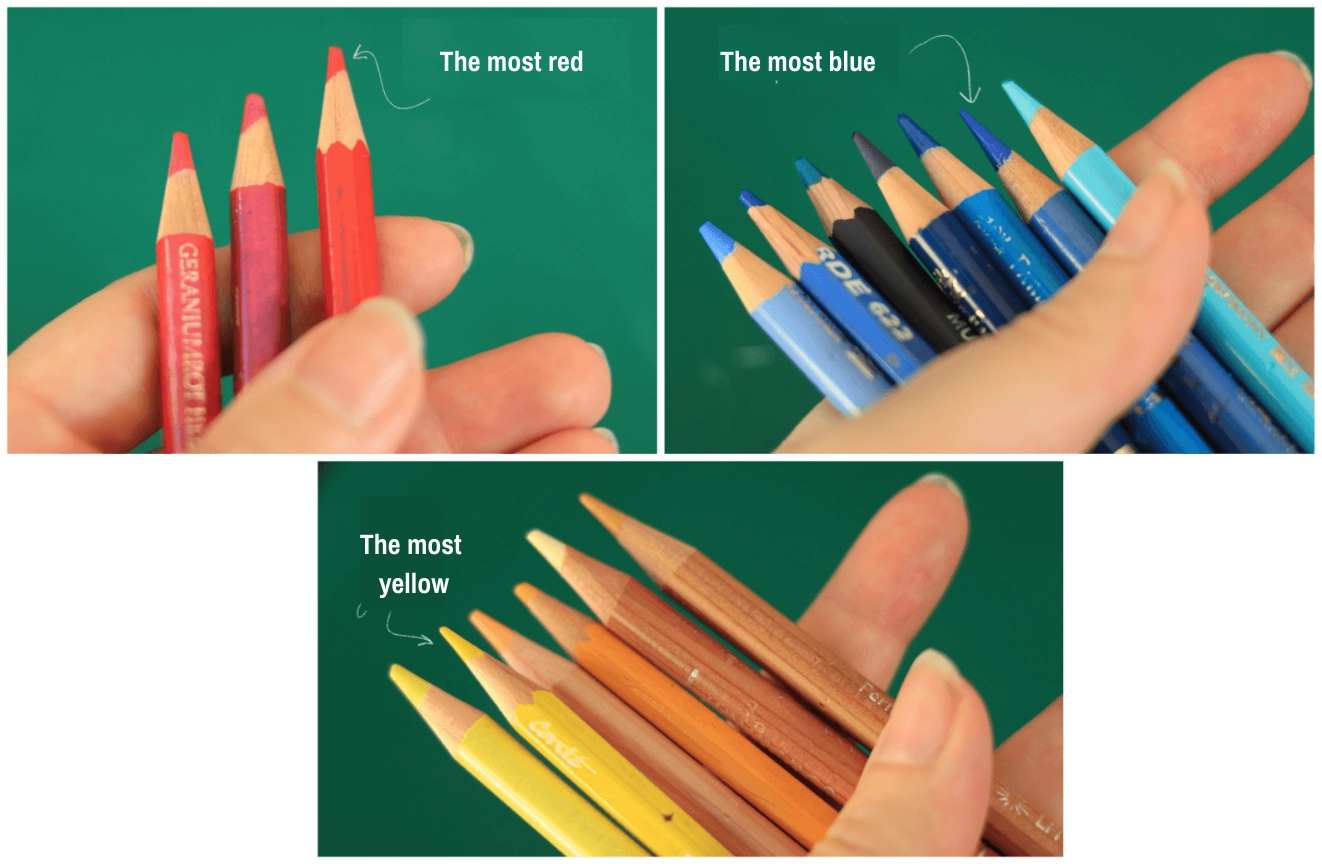
USE COLOR THEORY TO ACHIEVE A SUCCESSFUL GRADIENT
And now, a bit of color theory.
Here is a color wheel:
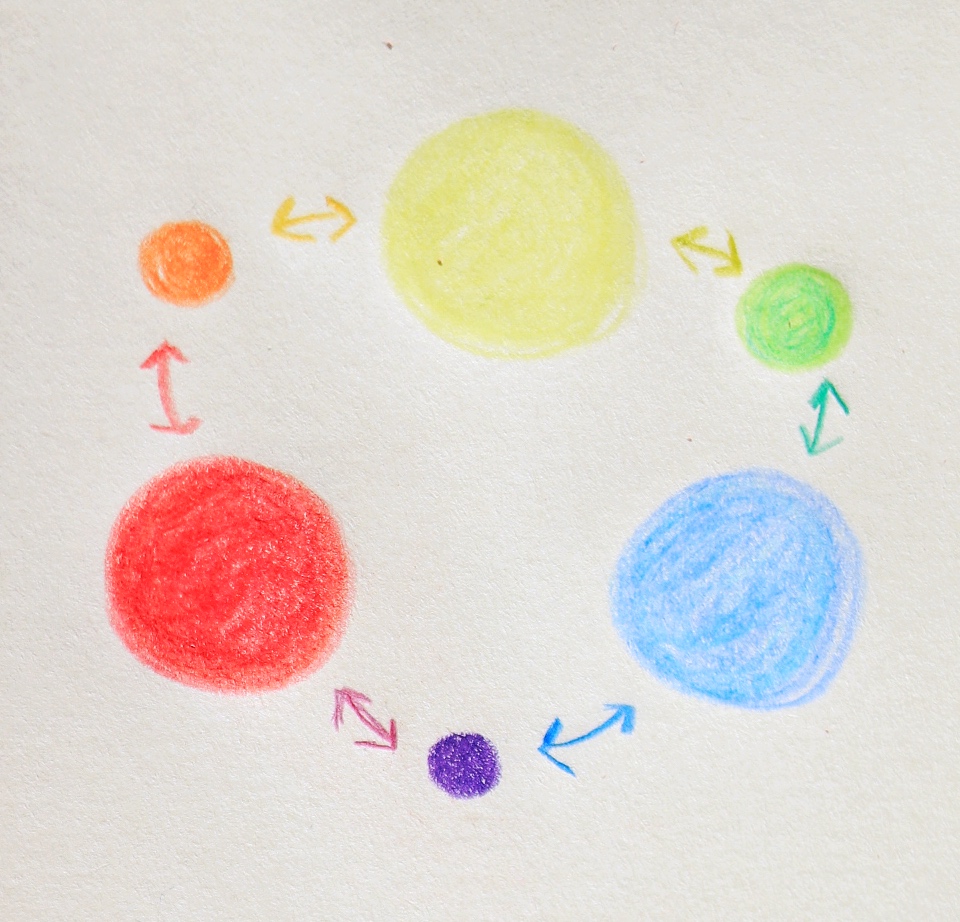
The largest circles are the 3 primary colors, the smaller circles are the 3 secondary colors. This color wheel is extremely important for gradients and coloring in general. Why? Because if you try, for example, to make a gradient from red to green (which are opposites) without going through the primary and secondary colors that separate them, it's going to be very messy!
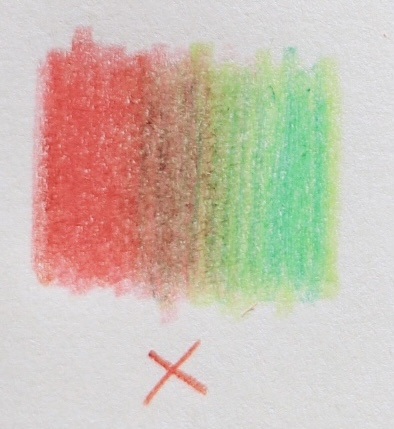
Indeed, if we want to avoid muddy colors, we cannot take any shortcuts on this color wheel. We will have to go all the way around, in one direction or the other. For example, to go from red to green, we can do:
- Red ->(orange) -> Yellow -> Green
or
- red ->(purple) -> Blue -> green
like this:
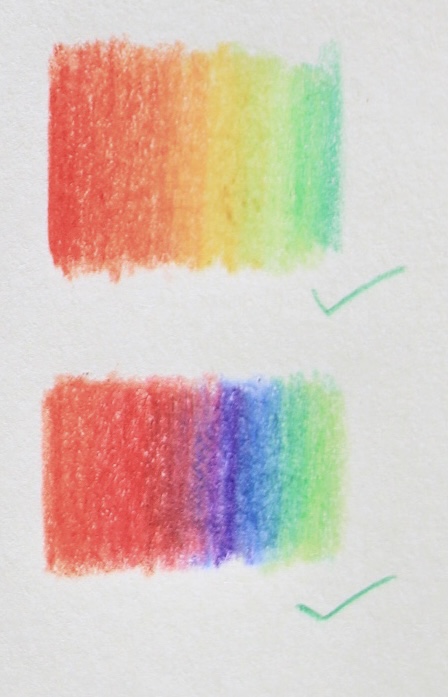
Note: Technically, it is not *forbidden* to go directly from green to red (nothing is forbidden in art), but it is essential to avoid having a "dirty" color in the middle (gray, brown, or even black).
Now, if you have a lot of colored pencils, you can have fun placing them on your color wheel. If you're not too sure, start with the greens as they're usually the easiest. A pine green or emerald is bluer than an anise green or an olive green.
On the one hand, it's fun, and it will sharpen your perception of colors... And on the other hand, you will be able to mix the right colors together. It is indeed easier to create a gradient from red to blue by starting/passing through a slightly pinkish red (closer to blue on the color wheel), rather than a slightly orange red!
Let's take action!
Now you know all this, you can't really go wrong when creating a gradient. The important thing to remember with colored pencils is to start gently and only press down when necessary. Just as there isn't just one way to use pencils, there are also several ways to create gradients. Below are some variations.
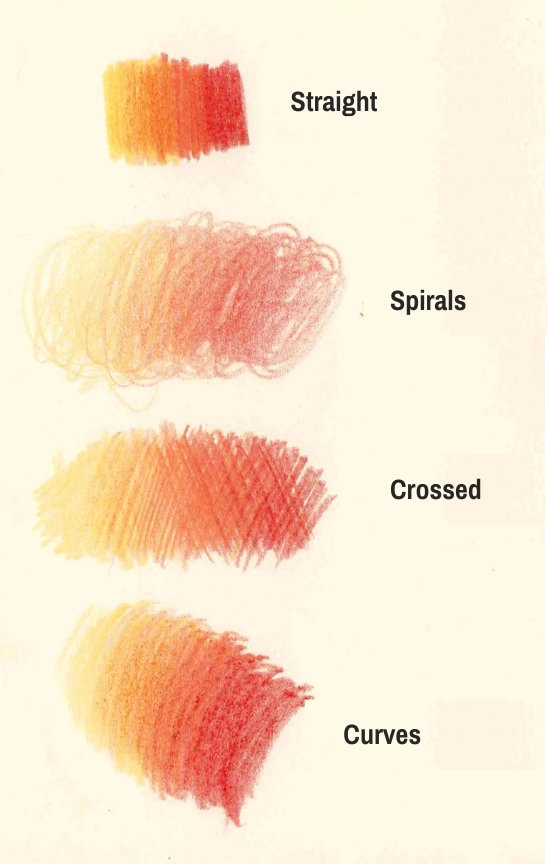
The principle is always the same: press harder when you want to use the pure color, and less hard when you want to mix it with another color. Here I used 3 pencils: a yellow, an orange, and a red. Both the red and the yellow extend into the orange area, but I pressed less hard there.
HOW TO DRAW A COLOR GRADIENT ON A CAPE
Case study: Let's color Super Gradient Boy's cape!
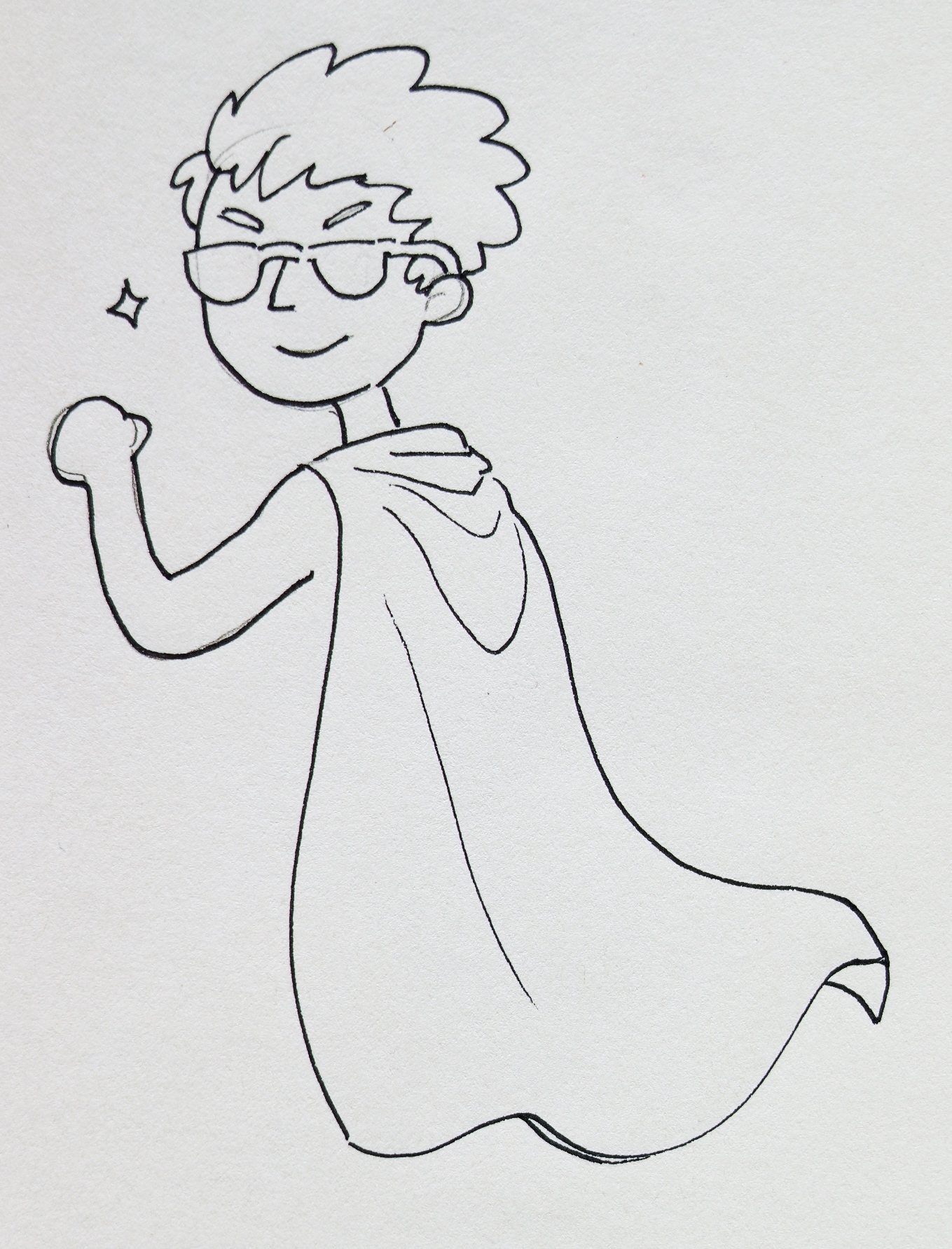
Gradient Boy needs a gradient on his cape. Let's hurry!
I decided to create a gradient from blue to orange!
I'll start with blue. Notice how I start by pressing hard, then I gradually press lighter. I've chosen a fairly cool blue (leans towards purple).
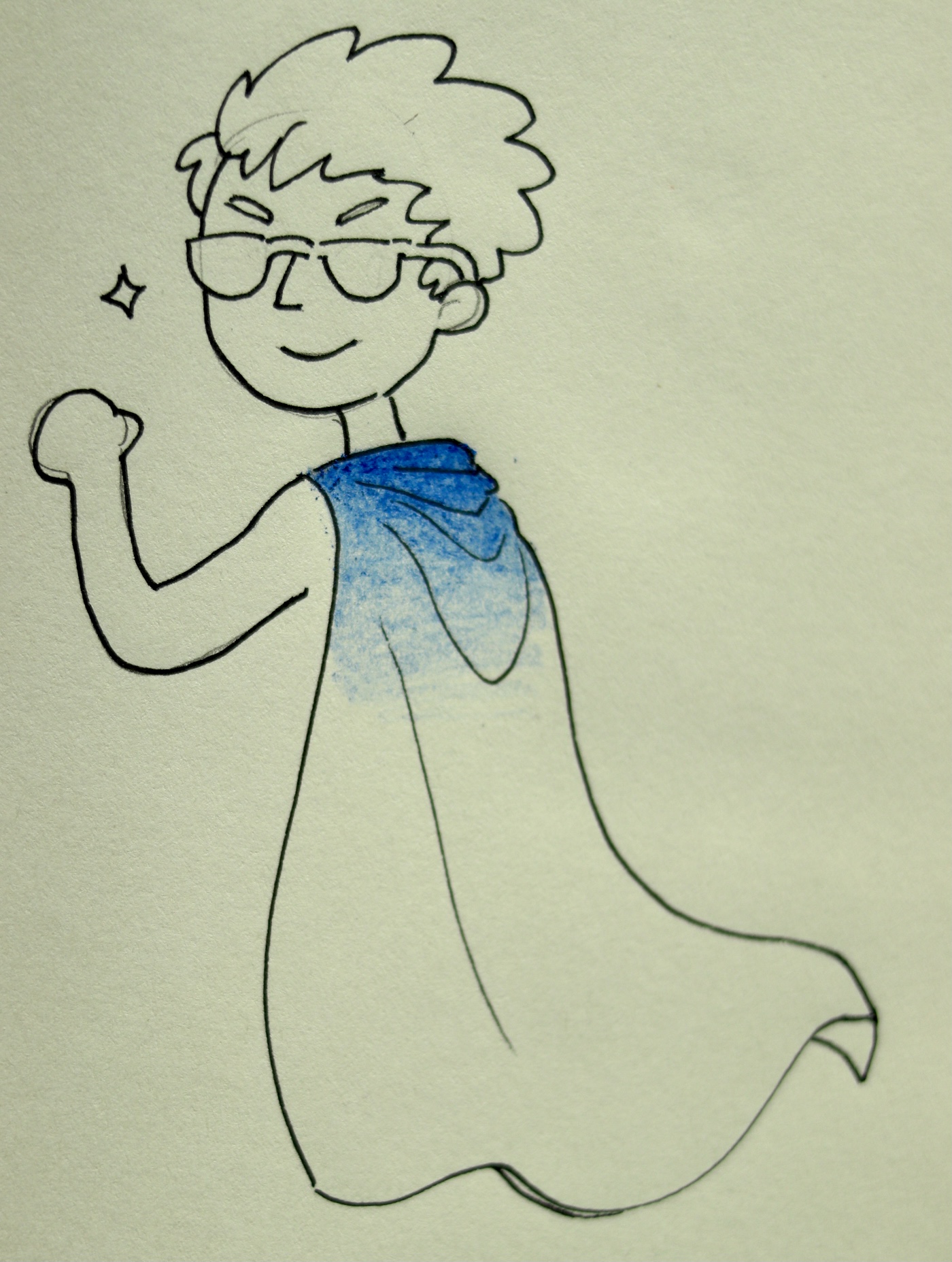
To transition more smoothly into the green, I opt to use another transitional blue, which is a sky blue and slightly leans towards turquoise. I start by gently pressing where I had applied the previous blue, then press harder below.
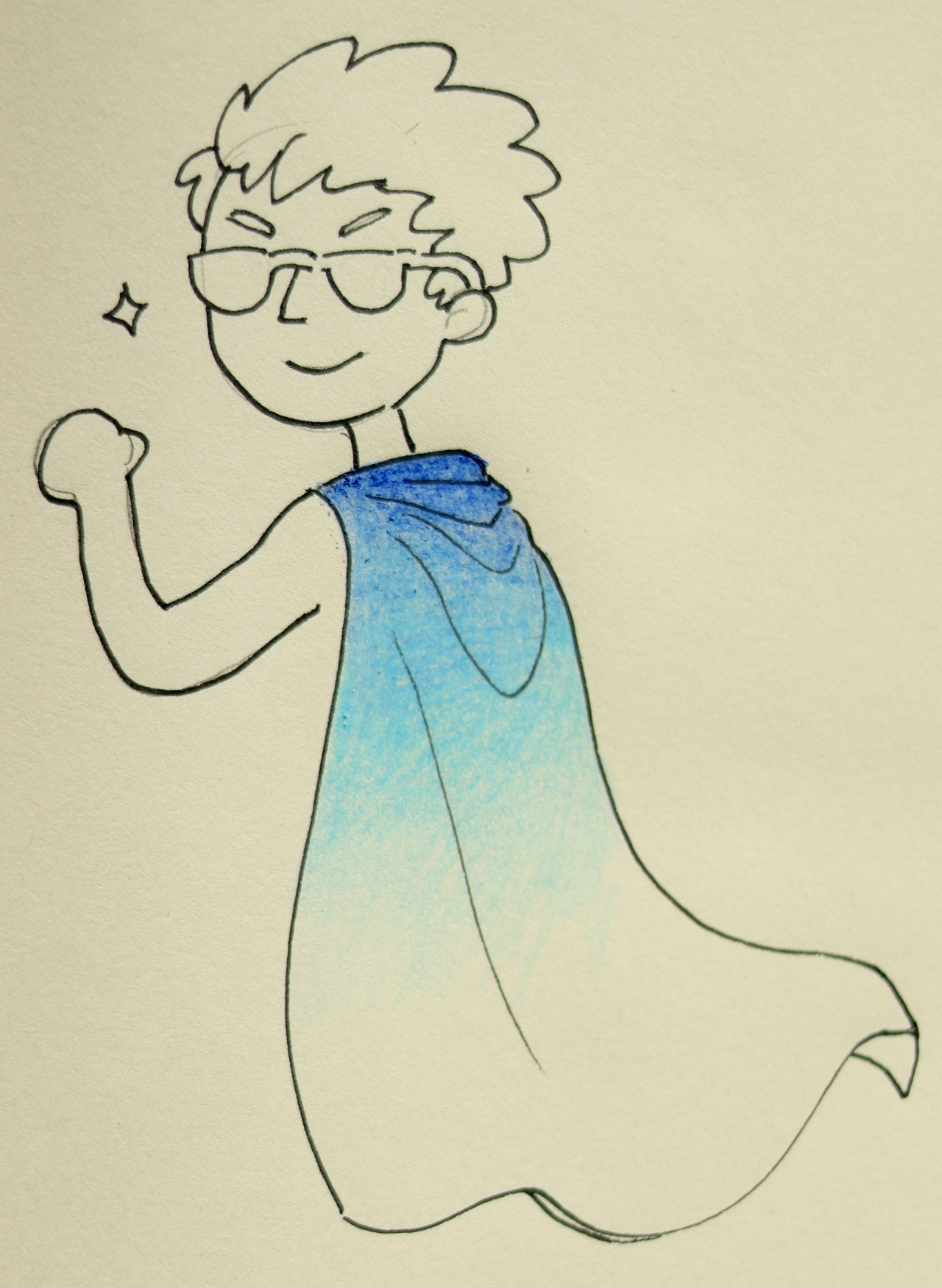
This blue is close enough to green that I can do without it, so I'm going straight to yellow. The green will naturally occur by mixing yellow and blue. I chose an almost fluorescent yellow, which has more affinity with green than red.
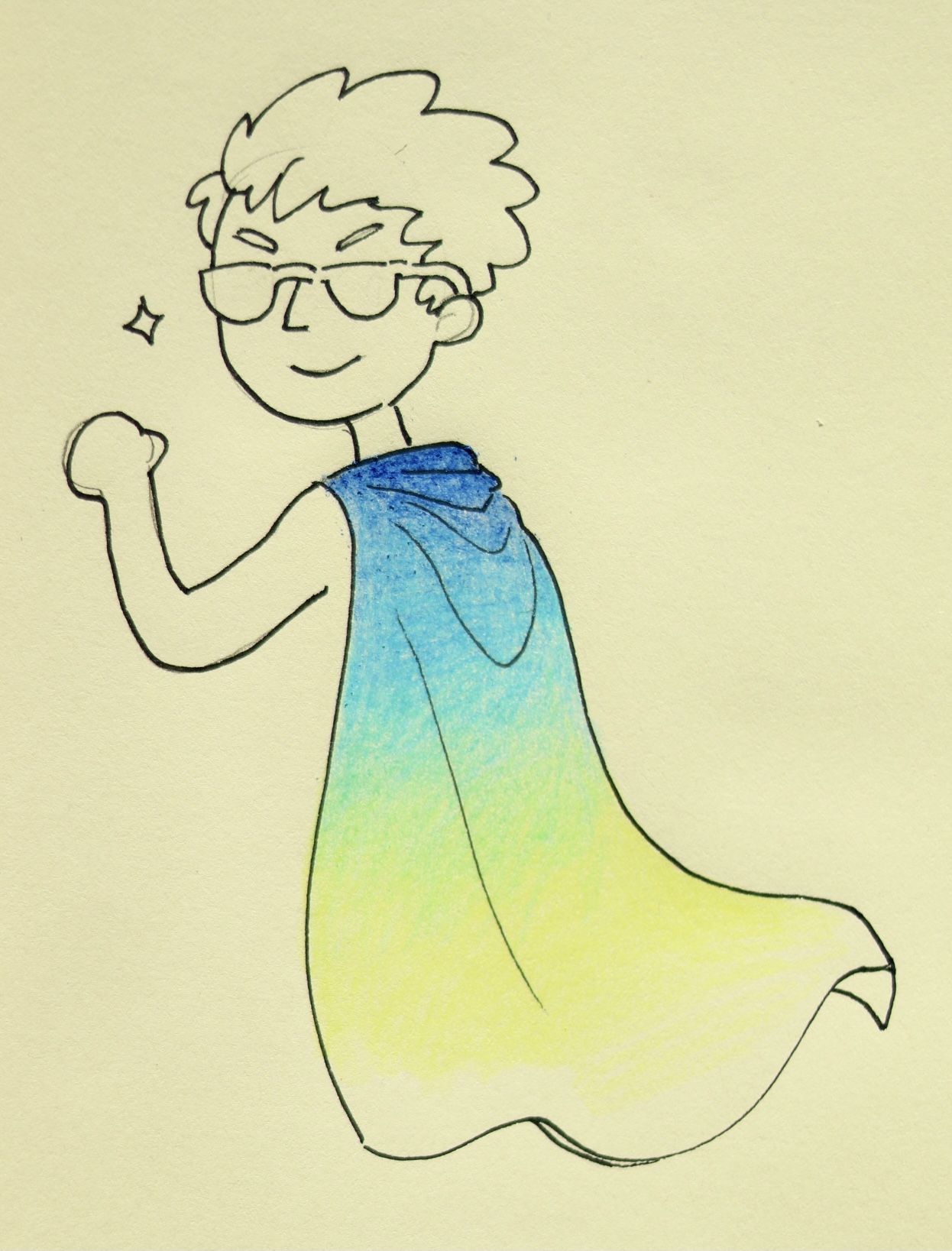
For a smooth transition, I choose a second yellow that is much more orange. I repeat the same technique as before.
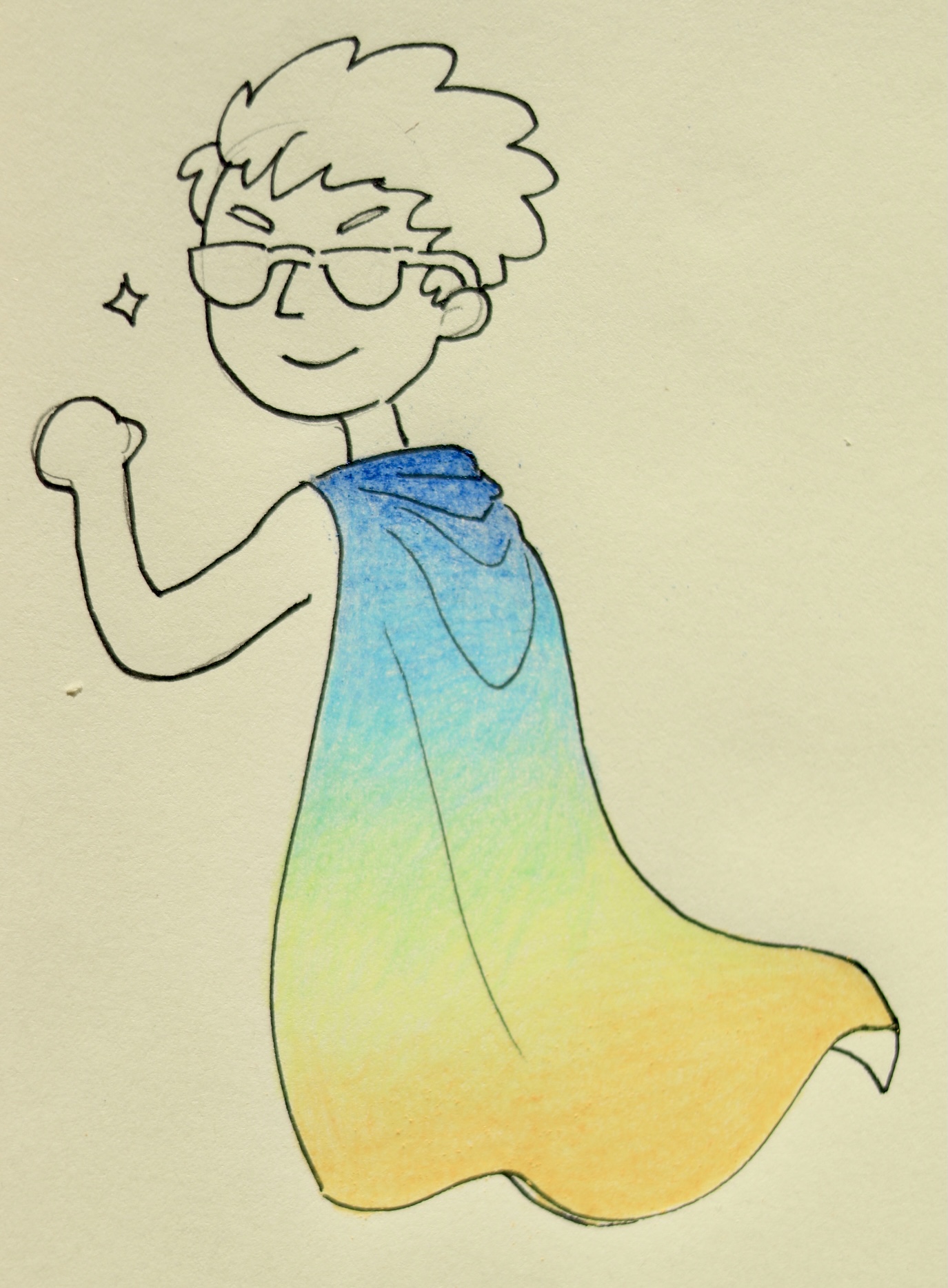
It's time to finish with an orange pencil! At this stage I can look over my gradient again and decide to choose any pencil to enhance a color or refine the transition between two of them.
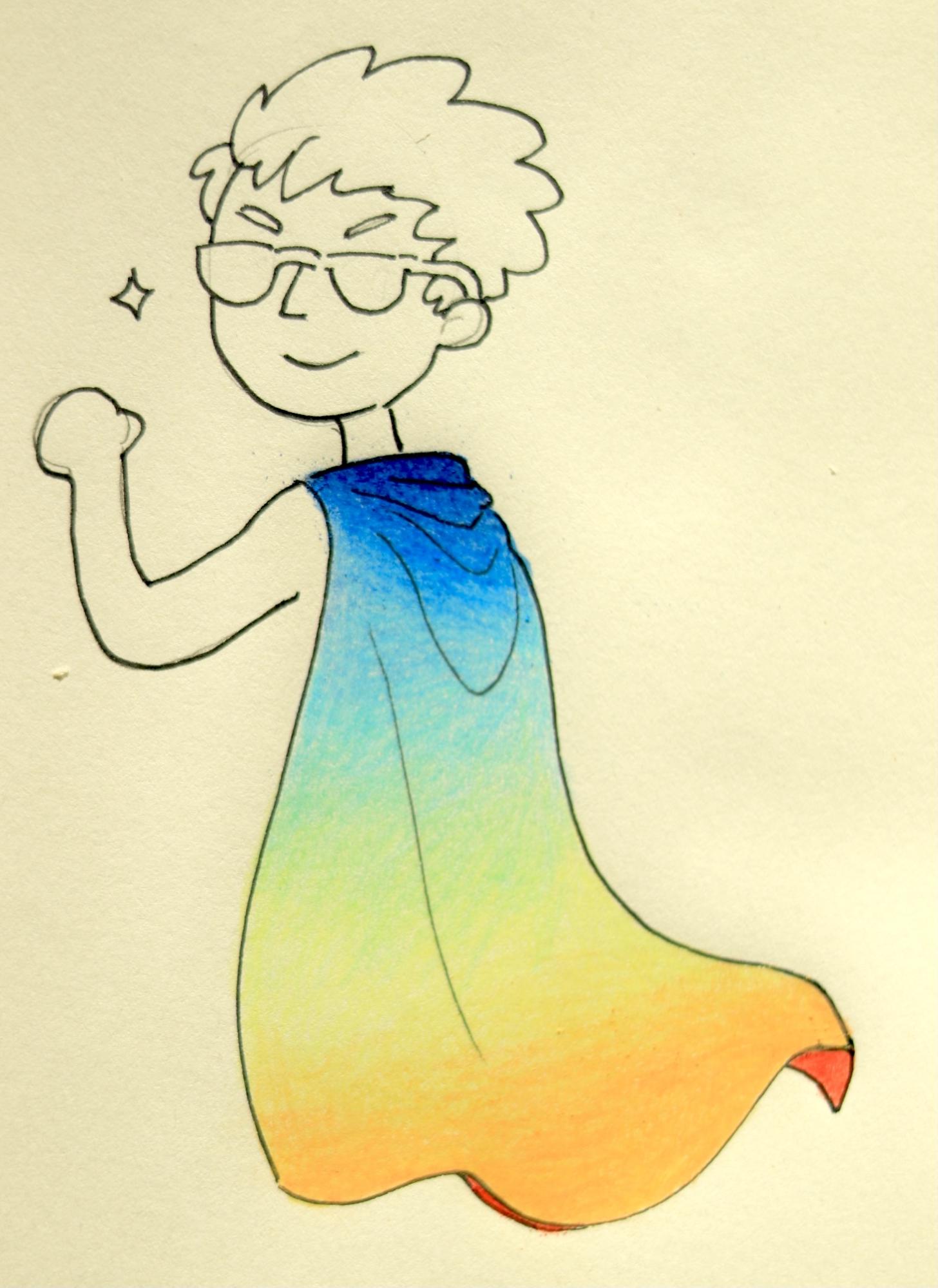
Bonus: I added a few little shadows to him!
I chose slightly offset colors in terms of hue for each area: an orange shadow on the yellow, a warm blue shadow on the blue/green, and a purple shadow on the original blue).

In conclusion:
This color theory is not just useful for gradients and colored pencils! It is very useful for any approach to coloring. If you would like more information on the concept of drawing in color, I invite you to check out our dedicated article!
In any case, now you are an expert at creating gradients, we can't wait to see your work!
Help Gradient Boy cover the earth with gradients!
Editor and illustrator: HadH


I like colors, thank you